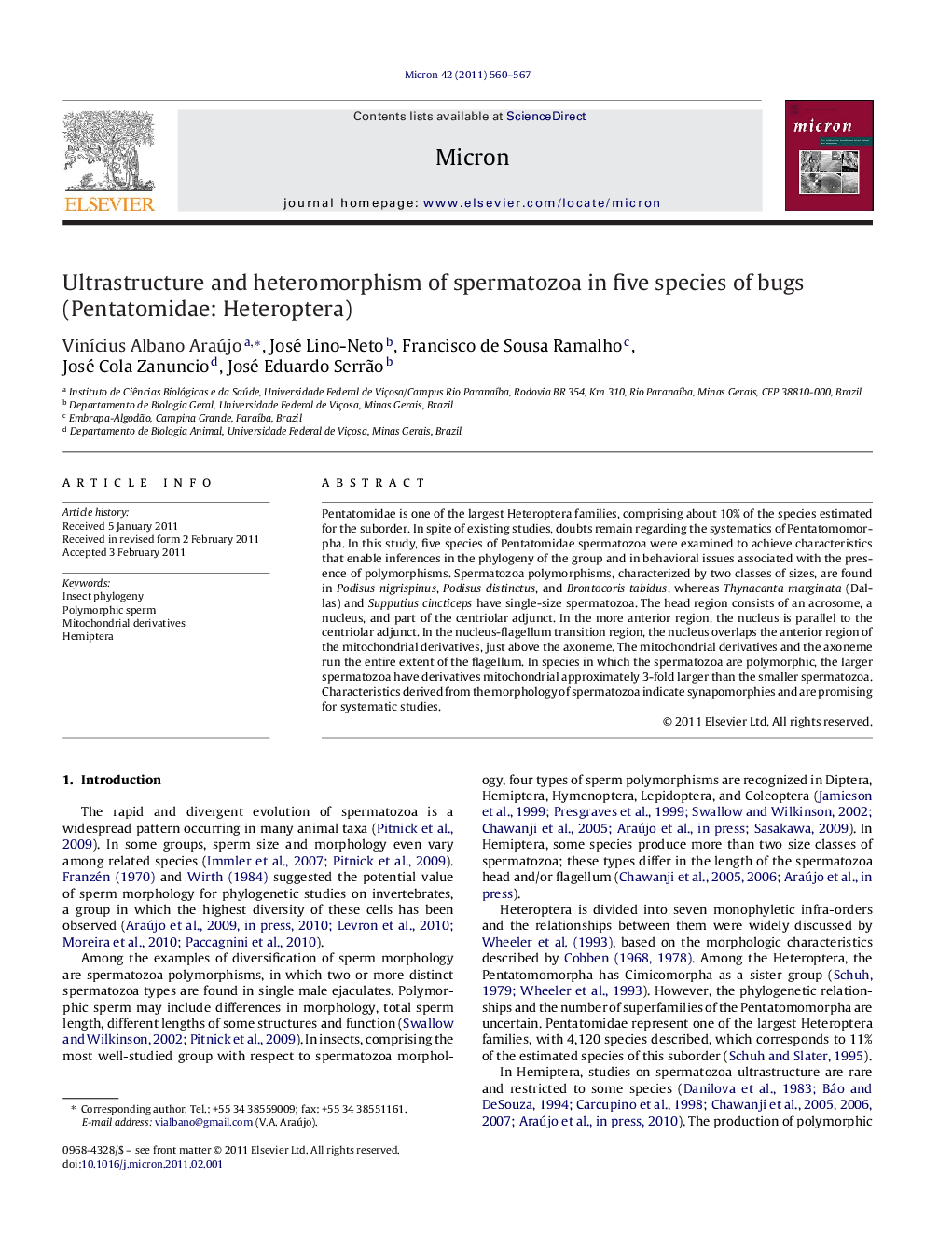| Article ID | Journal | Published Year | Pages | File Type |
|---|---|---|---|---|
| 1589131 | Micron | 2011 | 8 Pages |
Pentatomidae is one of the largest Heteroptera families, comprising about 10% of the species estimated for the suborder. In spite of existing studies, doubts remain regarding the systematics of Pentatomomorpha. In this study, five species of Pentatomidae spermatozoa were examined to achieve characteristics that enable inferences in the phylogeny of the group and in behavioral issues associated with the presence of polymorphisms. Spermatozoa polymorphisms, characterized by two classes of sizes, are found in Podisus nigrispinus, Podisus distinctus, and Brontocoris tabidus, whereas Thynacanta marginata (Dallas) and Supputius cincticeps have single-size spermatozoa. The head region consists of an acrosome, a nucleus, and part of the centriolar adjunct. In the more anterior region, the nucleus is parallel to the centriolar adjunct. In the nucleus-flagellum transition region, the nucleus overlaps the anterior region of the mitochondrial derivatives, just above the axoneme. The mitochondrial derivatives and the axoneme run the entire extent of the flagellum. In species in which the spermatozoa are polymorphic, the larger spermatozoa have derivatives mitochondrial approximately 3-fold larger than the smaller spermatozoa. Characteristics derived from the morphology of spermatozoa indicate synapomorphies and are promising for systematic studies.
Research highlights► Ultrastructure of spermatozoa from five species of Pentatomidae was described. ► Behavioral issues associated with the presence of polymorphisms were described. ► Characteristics derived from the morphology of spermatozoa are promising for systematic studies.
